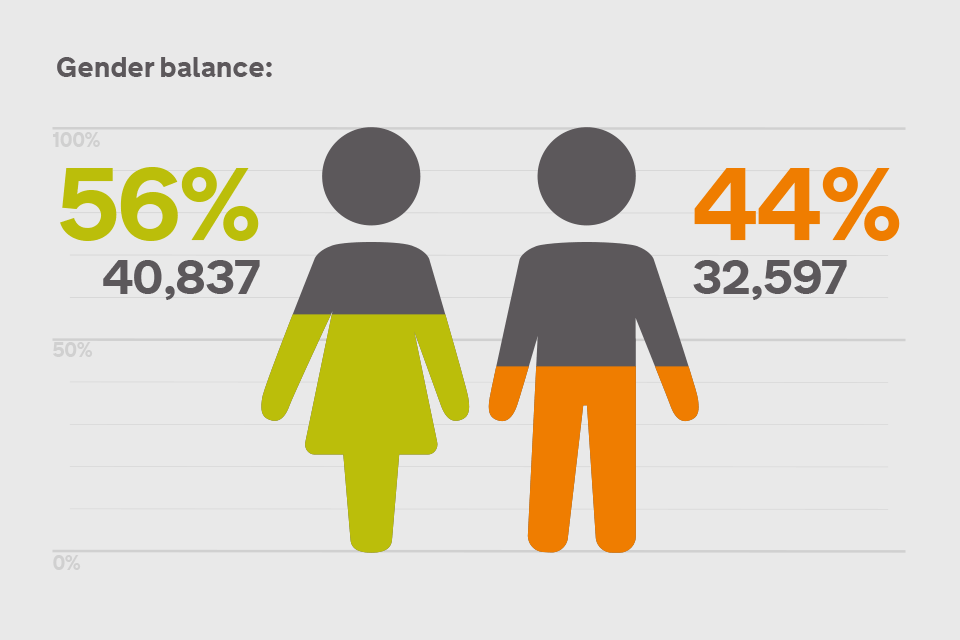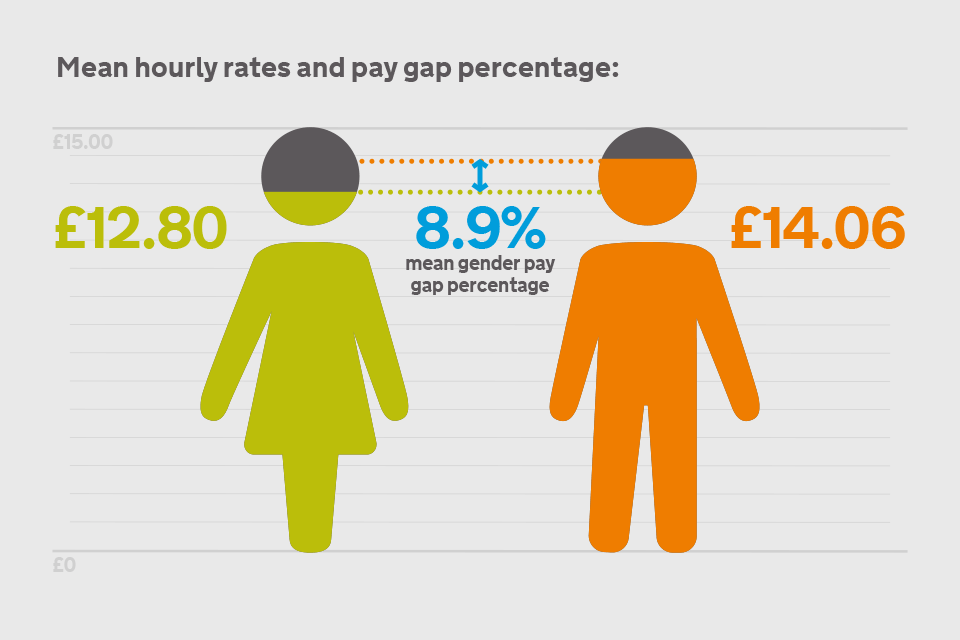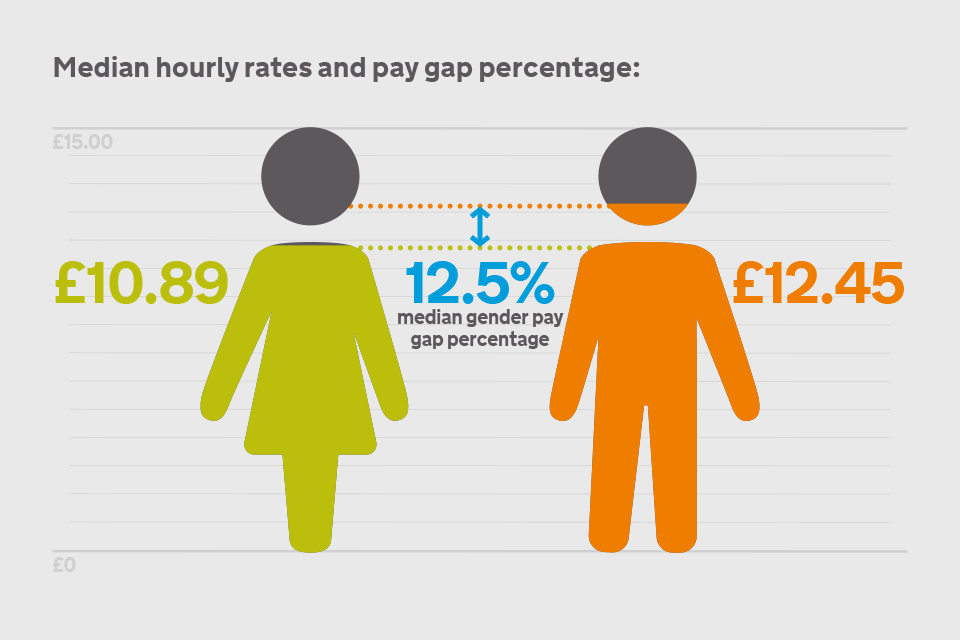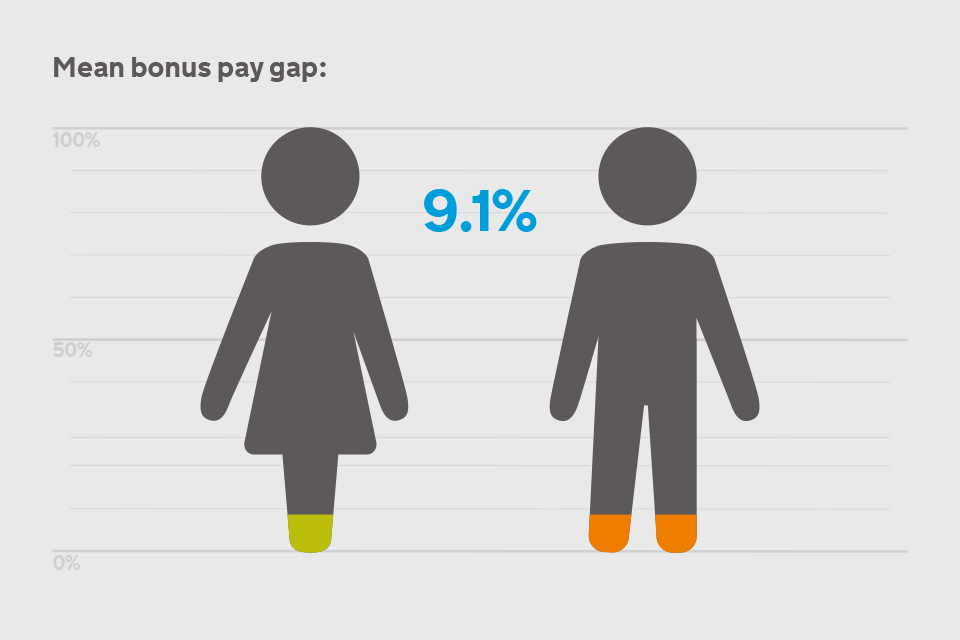HM Revenue and Customs and Valuation Office Agency gender pay gap report - 2017
Published 18 December 2017
1. Introduction
As Gender Champion for HMRC I am pleased to be the first Chief People Officer responsible for publishing our gender pay gap figures under the new reporting requirements. We are doing this on behalf of HMRC as well as our agency VOA.
We believe that transparency, reporting and monitoring is an important step to tackling any inequality which is revealed through examining pay gaps. This is why we have published our data with a greater examination of our gender pay gaps to enable us to identify any areas that we are able to change to strive towards eliminating the gender pay gap.
We are taking this opportunity to look at what is driving them, consider our abilities to change them and to use this as a benchmark to improve the situation over the coming year. We are also taking the time to recognise the work we’re already doing to encourage colleagues of all grades to develop and progress in their careers, such as talent and development programmes, leadership training and offering mentoring and coaching opportunities. We will be dedicating more time to encourage colleagues to take these opportunities to develop their careers, as well as further promoting flexible working at all grades.
While our figures are lower than the national average gender pay gap which is 18.1%, we must not be complacent and ensure that we recognise where there is more we can be doing. It must be remembered though that headline figures tell only a small part of the story and that we must consider the full demographics of our department to ensure that we are tackling the real issues and not any preconceived ideas of where there may be pay gaps.
In publishing our pay gap data we should also look at ways to improve opportunities and pay for all, to ensure equity amongst our staff while also recognising and acknowledging the areas that we have no control over.
Esther Wallington Chief People Officer, Her Majesty’s Revenue and Customs
2. Overview
Earlier this year, the government introduced world-leading legislation that made it statutory for organisations with 250 or more employees to report annually on their gender pay gap. Government departments are covered by the Equality Act 2010 (Specific Duties and Public Authorities) Regulations 2017 which came into force on 31 March 2017. These regulations underpin the Public Sector Equality Duty and require the relevant organisations to publish their gender pay gap data by 30 March 2018 (and then annually), including:
- mean and median gender pay gaps
- the mean and median gender bonus gaps
- the proportion of men and women who received bonuses
- the proportions of male and female employees in each pay quartile
The gender pay gap shows the difference in the average pay between all men and women in a workforce. If a workforce has a particularly high gender pay gap, this can indicate there may be a number of issues to deal with, and the individual calculations may help to identify what those issues are.
The gender pay gap is different to equal pay. Equal pay deals with the pay differences between men and women who carry out the same jobs, similar jobs or work of equal value. It is unlawful to pay people unequally because they are a man or a woman.
This report fulfils the department’s reporting requirements, analyses the figures in more detail and sets out what we are doing to close the gender pay gap in the organisation.
3. HMRC and VOA gender pay gap report 2017
This report gives the gender pay gap data in HMRC and its agency VOA for the year 2017.
For salaries we used a snapshot date of 31 March 2017. The relevant pay period was our March payroll.
For bonuses we used the period 1 April 2016 to 31 March 2017, the 12 months before the snapshot date.
The gender pay gap data supplied is correct for all staff in post with HMRC and VOA on 31 March 2017. The detailed results are below at Annex B.
In HMRC and VOA there were 73,434 staff in post. Our gender balance at this date was:
| Female | Male | |
|---|---|---|
| Percent of workforce | 56% | 44% |
| Female | Male | |
|---|---|---|
| Number of staff in post | 40,837 | 32,597 |

Image showing the gender balance within the combined HMRC and VOA workforce.
Out of the 73,434 staff in post 298 staff are not on the officially published HMRC pay ranges. 251 staff are covered by TUPE regulations and a further 47 are on legacy Inland Revenue and Customs and Excise terms and conditions in HMRC and 322 have opted to remain on the previous Pay Band system in VOA.
HMRC and VOA both follow the standard public sector approach to pay and grading. All posts sit within one of nine levels (grades), and each level has an associated pay range consisting of a minimum and maximum rate. In both HMRC and VOA the AA grade consists of a single spot rate. Salaries are paid according to grade and annual pay awards within the grade are paid irrespective of gender.
Our headquarters are in London however HMRC and VOA have offices right across the UK. All HMRC and VOA grades with the exception of Director and Director General within the Senior Civil Service (SCS) have both a London and National pay range. At 31 March 2017, VOA also had two further local pay zones, Zones 1 and 2. This report covers the main pay ranges and those in VOA Zones 1 / 2 have been recorded with the National pay range for anonymity purposes due to the relatively small numbers involved.
For pay purposes we are governed by public sector pay policy, which HM Treasury has overall responsibility for. This defines the overall parameters for civil service pay uplifts each year in the pay guidance, to ensure that civil service pay awards are consistent with the government’s overall objectives.
In HMRC the annual pay award currently comprises two elements:
- a consolidated award paid to all staff (subject to performance)
- a non-consolidated, non-pensionable award linked to exceptional performance against objectives
In VOA the annual pay award currently consists of a consolidated award paid to all staff (subject to performance).
The values of both consolidated and non-consolidated pay awards are negotiated with our recognised trade unions, and is subject to HM Treasury and Ministerial agreement. We do not negotiate individual awards, and our pay system takes no account of gender or any other protected characteristic.
Bonus payments are made to staff in HMRC in a variety of ways. An element of this is paid as end of year performance payments as described above. Some is paid as in year performance payments. In VOA it is entirely paid as in year performance payments.
4. Gender pay gap data
There are 1,342 entries which were excluded from Hourly Rate calculations as they were not a “full pay relevant employee” for all of March 2017. This is because they were either not being paid or were on reduced, statutory or nil pay at any point during March.
For quarterly pay range information 18,023 staff were in each quartile.
Base pay

Image showing the mean hourly rates and pay gap percentage for HMRC and VOA.
The mean hourly rate for women is £12.80
The mean hourly rate for men is £14.06
Mean gender pay gap is 8.9%

Image showing the median hourly rates and pay gap percentage for HMRC and VOA.
The median hourly rate for women is £10.89
The median hourly rate for men is £12.45
Median gender pay gap is 12.5%
The distribution of our workforce drives our mean and median figures. Whilst we have a very diverse workforce we do still have a large number of our female workforce in the lower pay grades. It should be noted however that the gender mix of the Executive Committee covering both VOA and HMRC on 31 March 2017 was 6 males and 5 females.
HMRC and VOA have individually considered their gender pay gap results in more depth and both organisations have found that the differences reduce dramatically when considering it for each grade.
HMRC and VOA recruitment and promotion policies are based on fair and open competition.
We are both committed to offering roles on flexible working patterns, including a range of options such as part-time working, alternative working hours, home working and enhanced shared parental leave.
Bonus pay
The structure of our workforce also influences our mean bonus gap, which sits at 9.1%.

Image showing the mean bonus pay gap for HMRC and VOA.
At HMRC and VOA we are proud to enable our staff to work alternative working patterns including reduced hours if it suits their lifestyle. However this does therefore impact our mean bonus gap.
We know HMRC and VOA bonus systems are all gender neutral by design. However a large female workforce in the lower pay grades drives our mean bonus gap, in the same way it does our gender pay gap.
The bonus gap is affected by two main factors:
- all HMRC end of year performance payments are paid according to grade with increasingly greater amounts paid to senior pay grades to reflect the work they carry out
- the legislation requires the inclusion of year-end performance bonuses which have been pro-rated for staff who work reduced hours, of which 80.8% of women
5. Actions
HMRC and VOA supports the fair treatment and reward of all staff irrespective of gender. We have pay and conditions of employment that do not discriminate unlawfully and are free from bias by ensuring that equal pay is in place for like work, work rated as equivalent and work of equal value. HMRC and VOA use a job evaluation system to assess the relative value of jobs across the organisation, and this provides evidence in support of the allocation of jobs within our grading structure.
Talent and development programmes
We recognise that our staff don’t all want the same things from their careers, however, we aim to provide everyone with opportunities to be the best they can be and to progress, whether to more senior roles, or other roles in HMRC or the civil service. To support this, we will continue to encourage staff to benefit from the variety of programmes we have across the department such as Future Leaders Scheme, Leap, Embrace, Ascend, Fast Stream, and comprehensive Tax programme
Flexible working
As part of our Transformation programme, and moving to Regional Offices, we will continue to support staff who wish to work more flexibly, across all grades. Most roles are available as job-share, reduced hours, or flexible working patterns.
Equal Pay Audit
Continuing work on the regular equal pay audit to assess all areas of possible improvement
Performance Management
Carry out a thorough and robust review of the performance management system within HMRC to establish areas for improved development, engagement, and productivity.
6. Calculations
Our calculations followed the legislative requirements[footnote 1], and we confirm the data reported is accurate. All staff who were deemed to be full paid relevant employees were included, however contractors were not, as the vast majority were not in scope according to the regulations, or there was insufficient data, however, we aim to include this data for future calculations.
Annex A - workforce demographics
Women are over-represented in more junior grades, where pay is lower, and under-represented in more senior grades.
HMRC and VOA data
| Grade (increasing seniority) | Number of men (% of men who work in this grade) | Number of women (% of women who work in this grade) | % Female |
|---|---|---|---|
| AA/AO | 10874 (33.4%) | 18712 (45.8%) | 63.2% |
| EO | 7336 (22.5%) | 9779 (23.9%) | 57.1% |
| HEO/SEO | 9699 (29.8%) | 8859 (21.7%) | 47.7% |
| Band T | 1268 (3.9%) | 876 (2.1%) | 40.9% |
| Grade 7/6 | 3209 (9.8%) | 2452 (6%) | 43.3% |
| SCS | 214 (0.7%) | 162 (0.4%) | 43.1% |
| Total | 32600 | 40840 | 55.6% |
When the grade make up is compared to the Civil Service overall it can be seen that HMRC have a comparable workforce.
| Grade (increasing seniority) | Number of men (% of men who work in this grade) | Number of women (% of women who work in this grade) | % female |
|---|---|---|---|
| AA/AO | 62,688 (34%) | 86,861 (40%) | 58% |
| EO | 48,308 (26%) | 62,463 (29%) | 56% |
| HEO/SEO | 51,003 (27%) | 47,846 (22%) | 48% |
| Grade 6/7 | 22,566 (12%) | 18,801 (9%) | 45% |
| SCS (centrally managed only) | 2,466 (1%) | 1,771 (1%) | 42% |
| Total (including those with unknown grade) | 193,100 | 226,380 | 54% |
Annex B - 2017 HMRC and VOA combined gender pay gap results
| % | |
|---|---|
| Mean gender pay gap - Ordinary pay | 8.9% |
| Median gender pay gap - Ordinary pay | 12.5% |
| Mean gender pay gap - Bonus pay in the 12 months ending 31 March | 9.1% |
| Median gender pay gap - Bonus pay in the 12 months ending 31 March | 0.0% |
| Proportion of male employees paid a bonus in the 12 months ending 31 March | 54.3% |
| Proportion of female employees paid a bonus in the 12 months ending 31 March | 55.6% |
Proportion of male and female employees in each quartile
| Quartile | Female % | Male % |
|---|---|---|
| First (lower) quartile | 54.6% | 45.4% |
| Second quartile | 66.0% | 34.0% |
| Third quartile | 53.8% | 46.2% |
| Fourth (upper) quartile | 46.7% | 53.3% |
| Staff in post | |
|---|---|
| Female | 40,837 |
| Male | 32,597 |
| Total | 73,434 |
-
www.gov.uk/guidance/gender-pay-gap-reporting-make-your-calculations (Accessed 1 November 2017) ↩
